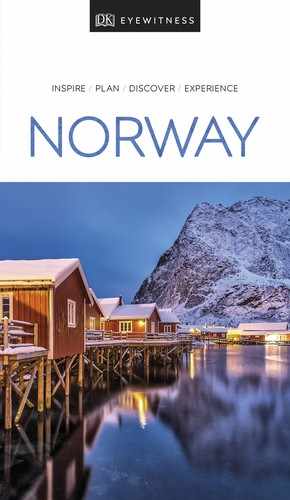OSLO AND THE
ART OF MUNCH
The most prominent Nordic painter and the pioneer of expressionism, Edvard Munch (1863–1944) painted intense and timeless artworks inspired by the urban and rural landscapes in and around Oslo. Explore these scenes and view the artist’s masterpieces for yourself.

t The Scream at the National Gallery until 2020
The Scream
This is the artist’s best known and most reproduced motif. Painted from 1892 to 1910, the ambiguous figure has its mouth wide open in a scream, amplified by the motion of the landscape. The Nasjonalmuseet and Munch-museet hold versions of The Scream, and both were stolen in 1994 and 2004, respectively. Both paintings are moving to new spaces, so check ahead as to where they'll be on display.
Munch-museet and Lambda
The Munch collection has outgrown its home in Tøyen, beyond the centre of Oslo. As many top cultural institutions relocate to the rapidly transforming Oslo waterfront, the Munch-museet will join them. A sensational modern building beside the iconic Opera House, Lambda Munch Museum is set to open in 2020 and will house a spectacular number of artworks by the artist.
Inspired by Ekebergparken
How did The Scream come to be? Munch took a walk in Oslo’s Ekebergparken, where a vibrantly red sky – combined with his own internal torment – inspired him to paint the famous work of art. Today, the park’s "Munch Spot" marks the scene immortalized in the artist’s most famous work, so visitors can paint their own version. From here, you can see all the way to Grünerløkka, where Munch largely lived.
Grand Café, Oslo
This charmingly old-fashioned, opulent café (www.grandcafeoslo.no) opened its doors in 1874 and swiftly became a hangout for artists and writers. Among its patrons were Edvard Munch and his contemporary Henrik Ibsen. Munch famously offered his painting Sick Girl in exchange for 100 steak dinners here.
Edvard Munch Beyond Oslo
Munch was a rest-less soul. When Oslo overwhelmed, he sought peace in the idyllic archipelagos of the Oslofjord and the stately mansions in the countryside. He painted the peaceful night scene The Girls on the Bridge (1899) at his beach house in lovely Åsgårdstrand, which has since been converted into a museum about the artist (www.munchshus.no). He later purchased Nedre Ramme at Hvitsten before residing at the manor house Grimsrød in Jeløya from 1913 to 1916.
Experience Oslo

hidden Munch Sights
University of Oslo’s Aula Hall
The university’s ceremonial concert hall features eleven large oil paintings by Munch.
Flats in Grünerløkka
Munch spent much of his childhood in the now-trendy neighbourhood of Grünerløkka. Visit Olso has a map of all the flats he lived in here.
Studio at Ekely
In 1916 Munch bought the estate of Ekely, on the outskirts of the city. Here he finally had enough space for his work.
